We have listed possibly the 3 best ways of being able to help your company absolutely thrive.
BY SAVANT MAGAZINE
Read More
We have listed possibly the 3 best ways of being able to help your company absolutely thrive.
BY SAVANT MAGAZINE
Read More
You can find constructive things to do that’ll uplift your mood and fill your time. See below to get inspired and learn some things to do on a day off.
BY SAVANT MAGAZINE
Read MoreWe are always looking for the next home interior trend for our home that we can either add ourselves or certainly take some inspiration to make other changes in our home.
By SAVANT MAGAZINE
Read MoreLook at this COVID-19 pandemic as the ideal opportunity to explore those interests and hobbies you never have time to get to during more stable times.
By KATE HARVESTON
Read MoreIf you like the idea of organising an earth-loving celebration to mark to your big day, here are some ideas that should help you make your dream wedding green as well.
By Brigitte Evans
Read MoreEco-friendly clothing label from Copenhagen, Gritt & Borris, created by a couple, reflects their mutual pursuit for a greener fashion industry and ethos of minimising fashion's environmental footprint.
By Hanna-Amanda Pant
Read More
Words: Alexandra Mozgovaya
“There is enough on earth for everybody’s need, but not for everyone’s greed.” (Gandhi)
Today’s consumer society instills into us that being considered interesting and enviable in the eyes of others can only be achieved if we buy new products: clothes, gadgets, accessories, handbags, you name it. On repeat and on repeat. Many more pairs of fancy shoes and dresses for various ensembles to promote on social media than we actually need, although we always desire plenty. But these six green fashion names prove that fashion and cautious attitude towards the world can be combined, which as a result leaves space for more meaningful activities, lifestyle inspiration and positive energy. Focusing our attention on getting rid of the importance of material things removes dependency from clothes and teaches us to appreciate something bigger than simply a wardrobe full of fancy garments.
These six bloggers, pioneering a movement that celebrates a more meaningful approach to fashion and living, are a true inspiration and role models to us, gearing forward precious change in rethinking consumerism.
1. Agnes Muljadi (artsyagnes.com)

Agnes Muljadi, Artsyagnes.com, 2017.
Agnes is a ballerina, who became vegan 2 years ago and discovered the world of sustainability for herself, including what to wear and how to decorate her home. Her blog is an up-to-date resource about slow living and different collaborations with a variety of eco-brands. It’s an online journal of a daily lifestyle consisting of ballet, veganism and love for sustainability.

Agnes Muljadi, Artsyagnes.com, 2017.
Agnes says:
“I love doing Ethical OOTDs (Outfit Of The Day) where I put together a head to toe look featuring all vegan, all sustainable, all cruelty-free and all fairtrade brands. I love reading messages from people who are interested in building a more sustainable closet, but they just don't know how to start. It's important for us to reach out to people, give them ideas and show them that you can still look fashionable without harming animals or the environment.”
Agnes’s advice to our readers:
"I think a good place to start is for all of us to continue to ask what is it we're voting for every time we spend money on food, fashion, furniture, or anything really. For me, I've always wanted to support brands and businesses that are making an effort to protect the people, animals and the longevity of our planet."
2. Nataly Elbaz Bjorklund (literallynataly.com)

Nataly Elbaz Bjorklund, Literallynataly.com, 2017.
Nataly is a blogger who creates awareness on sustainablity issues, introducing slow fashion and eco-lifestyle brands. She was born in Tel Aviv, raised in Bangkok, then moved to London, and now lives in Oxford. She started her sustainable lifestyle blog last spring, although it had been at the back of her mind from when she was writing her MA thesis about sustainability in the fashion industry a few years back. The moment of change came after the realization that Nataly had developed a habit of shopping as often as every week, spending money on things that she really didn't need and never used.
On the blog, Nataly focuses on raising awareness about sustainability issues and introducing slow fashion brands. She also works together with ethical brands to promote and introduce a conscious lifestyle to those who might not normally consider issues of social justice and sustainability. “I want to show people that you don’t need to compromise on a beautiful product by shopping sustainably” – Nataly says.

Nataly Elbaz Bjorklund, Literallynataly.com, 2017.
Nataly’s advice to our readers:
"Cherish the things that you already own. I found that once I began to live a more conscious lifestyle, I noticed so many things in my home which I had previously bought and remained brand new, unopened, and with tags still on. Try to make do with those things before you go out to purchase new ones. To me the beginning to a more sustainable life was that mental switch."
3. Joan La (www.acupofjoan.com)

Joan La, A Cup Of Joan, 2017.
The blog with the catchy name A Cup of Joan focuses on showcasing vegan fashion that is both ethical and sustainable. It also features inspiring features on personal experiences about travel and other hot eco topics: veganism, animal rights and environmental issues all covered.
Joan has started sustainable lifestyle from simple practices of change: from using less plastic to limiting water use and preventing waste. She started paying more attention to a conscious lifestyle a year and half ago, and is gearing forward at a fast pace of raising awareness among others. She learned how detrimental and harmful the effect of fashion industry is to our environment, so changing some simple habits and beliefs, like attitude to shopping as a top priority, brought along more awareness about the importance of a waste-free, sustainable life.

Joan La, A Cup Of Joan, 2017.
Joan says:
"I love collaborating with brands that promote sustainability and ethics, and I hope to continue on doing so on a much larger scale. I haven't put out major projects as of late, however there are a few in the works where I will dive more deeply into promoting an eco-lifestyle, so stay tuned!"
Joan’s advice to our readers:
"The best way to begin living more consciously every day is to start with the small stuff. Even little things day to day can have a large impact over time. Bring reusable bags to the grocery store, carry around refillable bottles, thrift more, and consume less or little to no meat."
4. Valeria Hinojosa (www.waterthruskin.com)

Valeria Hinojosa, WaterThruSkin.com, 2017.
Valeria has created her inspirational blog WaterThruSkin that discovers and explores a world of mindfulness, sustainability, nature-loving, adventures, and kindness. She believes that perfoming the right everyday routines can transform into great changes.
She talks about conscious shopping and shows eco-friendly travel opportunities, adventures with animals in the wild, a plant-based diet, sustainable fashion, and yoga.

Valeria Hinojosa, WaterThruSkin.com, 2017.
Valeria found herself empty and devastating, trying to reach salary, “status”, and the VIP perks, and one day she decided to completely change succes-oriented lifestyle. Her progress as a certified yoga teacher and vegan chef, travelling and doing what she love – the little secrets of her happiness.
Valeria says:
"I fully understand that life is all about finding the right balance, making time for yourself and the things you love, and about making conscious decisions that have a positive impact on someone other than yourself. Life should be inspiring, and being an inspiration is magic!"

Valeria Hinojosa, WaterThruSkin.com, 2017.
5. Lee Vosburgh (http://www.stylebee.ca/)

Lee Vosburgh, StyleBee.ca, 2017.

Lee Vosburgh, StyleBee.ca, 2017.
Style Bee is all about fashion: stylish decisions, simplifying and putting together classy outfits. Lee is a designer who works in Ontario, so when reading her blog you can believe in her tips and the life and wardrobe hacks she shows.
She explores personal style putting accent on timeless clothes, shares independent brands and inspires to make conscious, thought-through choices when we go shopping.
Lee says:
"I think unique style is a combination of keeping things simple, comfortable and classic. I try to focus my budget on pieces for both my closet and home that I will be able to enjoy for years to come with smatterings of fun, unique items that set a look apart."
6. Jessica English Lass (www.englishlassinla.com)

Jessica English Lass, Englislassinla.com, 2017.
Jessica moved to the U.S. not so long ago and she combines her sustainable lifestyle attitude with discovering a new culture and a new country. So, on English Lass in LA you can find not only fashion decisions, but also an exciting life experience tale.

Jessica English Lass, Englislassinla.com, 2017.
As fashion lover Jessica one day decided to make more conscious steps starting to purchase differently: preferring slow garments to fast, mass-produced items. That was the start of her slow fashion lifestyle. She also writes about brands and different interesting products that promote a timeless concept.
Jessica says:
While exploring my new home I try to lead a sustainable lifestyle. Having worked in fashion for eight years I can’t deny my love for clothing.However, over the last few years, I’ve started to try to and only purchase ethically made garments and to support the buy local movement.
Being a sustainable role model is not so hard! Let's follow and make our lives better.
Apparently, organic has been a thing in French women’s grocery lists for years, but what does it take to introduce the word ‘organic’ into their everyday fashion choices? Sometimes the answer lies in an accidental research trip to the Himalayas in Nepal, during which long-term friends Kachen Hong and Alexis Assoignon experienced their own Eureka! moment, leading them a step closer to revolutionising the world of wardrobe staples in France. Les Sublimes surely serves as a complement filling in the gaps in the quintessential, timeless 'Parisian chic' style directory…in a delicately sublime way.

Les Sublimes A/W16 Campaign
What does Les Sublimes represent?
Co-founder Alexis Assoignon: Les Sublimes is France’s first sustainable luxury brand sold exclusively online. Les Sublimes is a brand that doesn’t make you compromise on your needs, while also making you look and feel good on the inside and out. That is what we define as being Sublimes: the combination of inner and outer beauty.
What are the ethical principles you have incorporated into your brand?
[When creating Les Sublimes] we were driven by a desire to improve environmental and social conditions around the world, as well as a desire to create sustainable wardrobe alternatives that we wanted and couldn’t find in the marketplace. In fact, no one in France is making the everyday clothing pieces — those items that make up 80% of our wardrobes — in a socially-fair and eco-friendly way. We were sick of having to choose between style, affordability, comfort, quality and ethics.
As a responsible company, we integrate ethics and transparency into every element of our business, from design and production, to corporate culture and customer service.
What’s the personal story that links together the creation of Les Sublimes?
My co-founder Kachen Hong and I have been good friends for over 10 years (we met while studying at Sciences Po Paris). In 2014 we both quit our jobs and met in Nepal for 2 weeks. We had both been thinking about starting something of our own in our respective fields (Kachen, a Consultant in sustainable consumption and Alexis, a fashion Account Executive), but we weren’t sure where to start.

Les Sublimes: Alexis Assoignon and Kachen Hong
In Nepal everything started falling into place. There were long, scenic treks with lots of time to talk and share ideas. We also went to visit a group of Tibetan refugees spinning yarn for weaving and a small group knitters making sweaters in a remote village. We saw the women working so hard, for so many hours, and earning so little. Less than a $1 per day! We could see firsthand the immense need for better quality jobs and living wages. Speaking with the women, they felt hopeless about their employment situation. We quickly discovered that by marrying our own skills in fashion and sustainability, we could create a solution for these women in underprivileged communities, and also solve a personal problem — the lack of desirable and ethical, yet affordable fashion in the marketplace. So, in the misty landscapes of the Himalayas, Les Sublimes, a lifestyle brand for worldly women with big hearts, was born.

View of the Himalayas

Tibetan refugee spinning yarn
I see every new startup as a collective effort, no single person can change the world alone. Bring an example of the power of teamwork.
I couldn’t agree more. Within the Les Sublimes team itself we choose to hire based on personality and purpose rather than a fancy resume or a corporate background. Because everyone on board is motivated by something bigger than themselves, the dynamics of the team are totally different. The work will always be rewarding because we share a common goal of making a difference. We also recognise that every person on the team has value.
We also believe that there is enough room on this planet for all of our [like-minded] businesses to thrive. So if we can work with our fellow entrepreneurs to reach our collective goals, then we are all better off. That’s one of the reasons why we choose to be fully transparent as a brand.
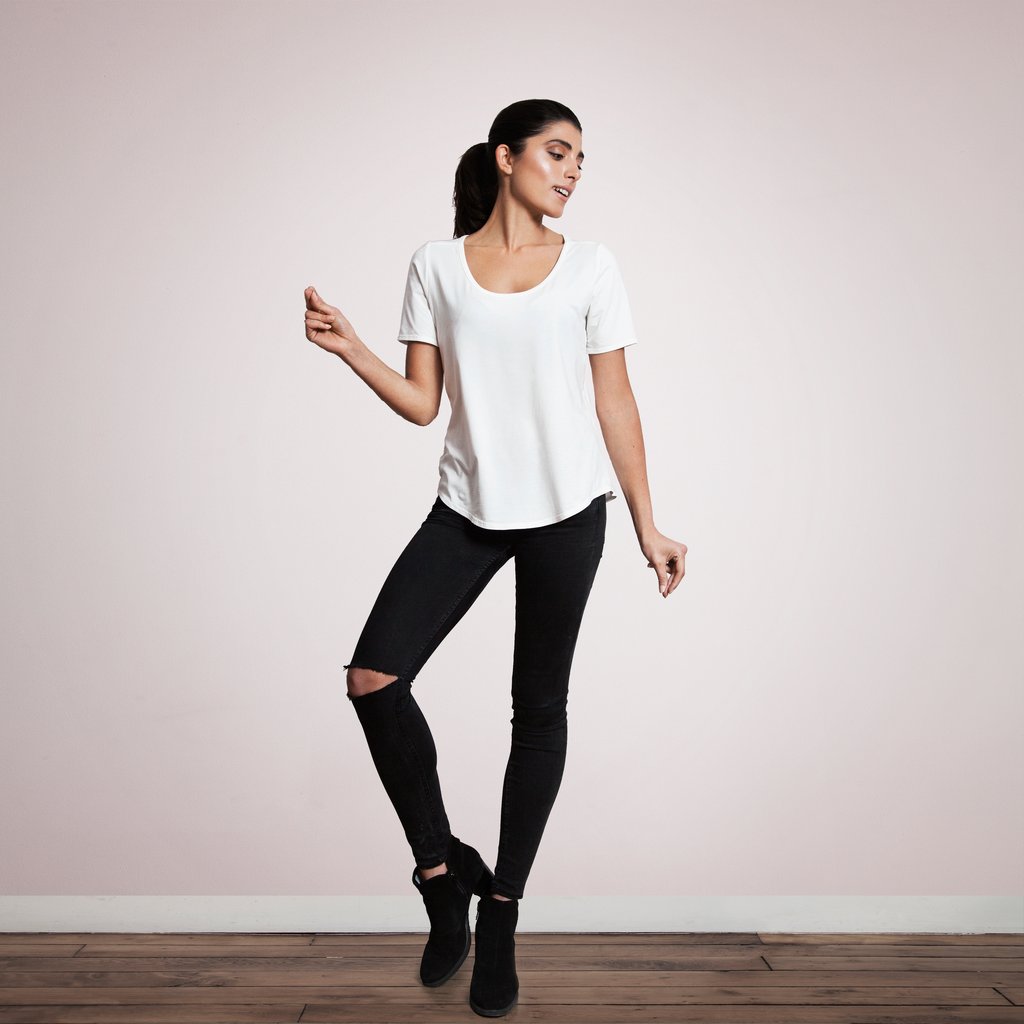
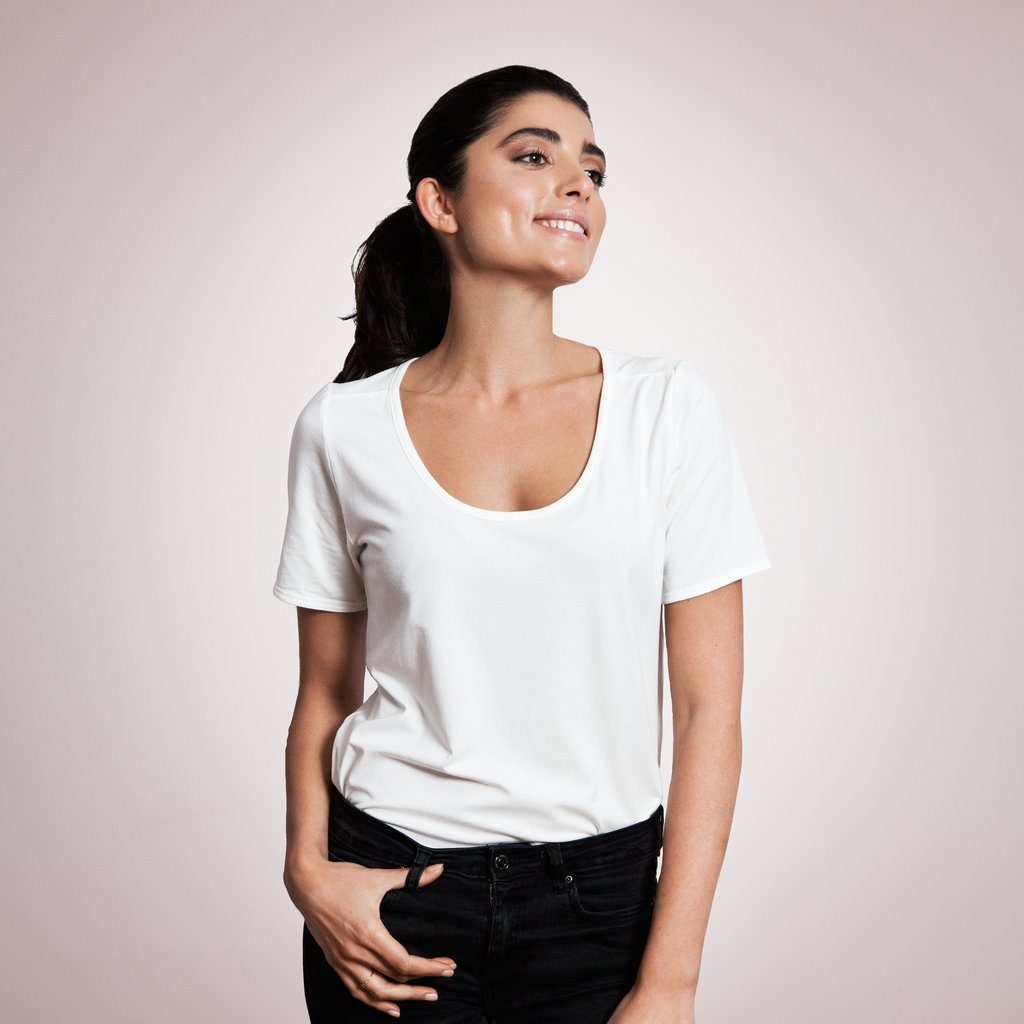


Describe your personal style. How is sustainability represented in your personal wardrobe choices?
My style is a mix of modern West Coast staples and effortless Parisian classics. I love to dress in something easy and comfortable, but still look chic and presentable in the city. Influenced by French dressing, I’ve always taken a position of quality over quantity, investing in well-made classics and essentials that I can easily mix and match with other items in my wardrobe. My mom always took me along to second-hand stores growing up, showing me how to find hidden gems at bargain prices. Nowadays I have taken my values a step further by actively seeking out products and brands that are environmentally fair. But the options are still limited, which is one of the motivating factors behind creating Les Sublimes.
What would you say about a typical French woman’s style in that respect — are they into sustainable choices, or it's only now that this mindset is starting to ingrain?
We were surprised to discover that France is definitely behind other markets, such as Canada, the U.S., Germany and Scandinavia, when it comes to shopping consciously. The French care a lot about the quality of their foods, and eating organic has quickly become a trend here. But as far as that expands into fashion, they are still learning. On the flip side, however, French women naturally shop with a philosophy of quality over quantity. So in terms of consuming less, they trump North Americans any day. They prefer to invest in high quality pieces from brands they trust, and take care of those items, so that they will last for years to come. The bulk of her wardrobe is very thoughtfully curated.
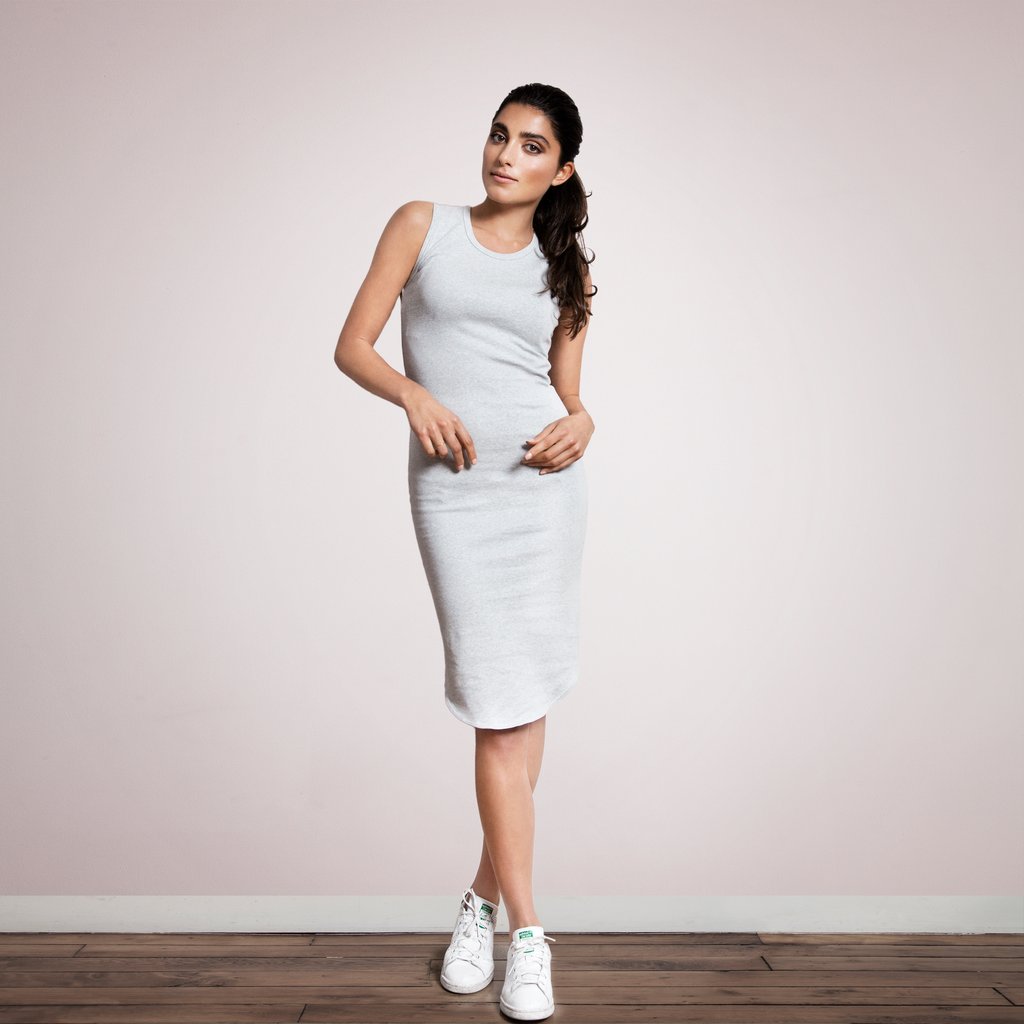
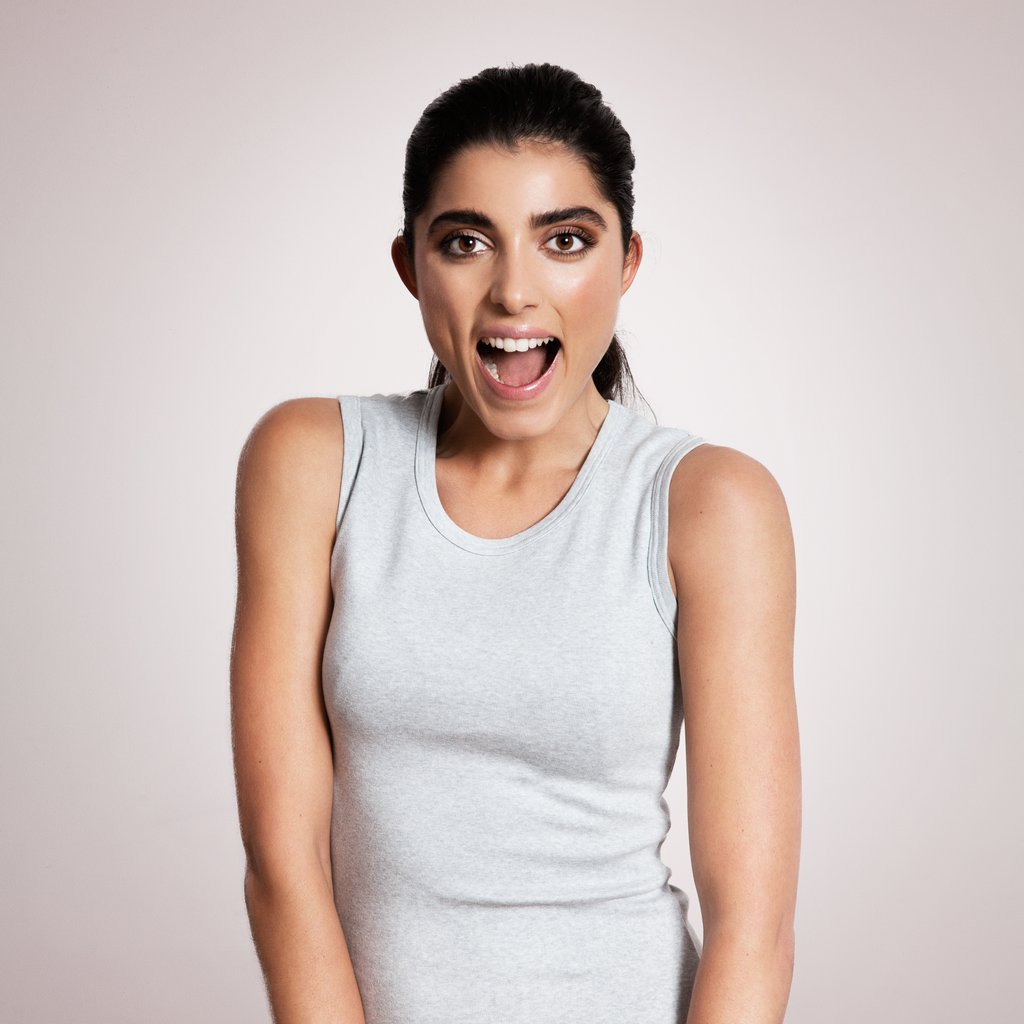
How does Paris as a city inspire your work?
Paris is an inspiring city - there are so many incredible museums, exhibits, shops, restaurants and monuments; it’s almost hard to stay focused on any single aesthetic! One trip to the Louvre and you want to introduce Roman inspirited jewellery, the next day you’re dreaming about empire waist dresses.

Les Sublimes A/W16 Campaign
What are the 100% natural gems on your beauty counter? Reveal us a secret conscious brand we all should know about.
I learned a lot about natural beauty products when I spent 2 months travelling through India a few years ago. I discovered great oils that can be used on the hair, skin, face, eyelashes — and they work better than any fancy cream. My favourite is almond oil. It’s the same stuff you cook with. You can buy a large bottle for a few dollars in any Indian supermarket, or for a bit more at your local grocery store. Nothing keeps my legs moisturised during those dry winter months like almond oil, and it even keeps me warmer, preventing a chill.
What's your attitude towards negative connotations linked to ethical fashion? Do you feel that ethical fashion still sustains the absence of glamour?
I do think that ethical fashion is still perceived by many people as being unglamorous – I call it folk festival chic. The public perception is that ethical fashion is unattractive, avant-garde, hippie-esque, or super ethnic. Products are rough, poorly packaged and overpriced because they are labeled ‘organic’. But this is definitely shifting. There are so many incredible brands emerging that are disrupting this old attitude towards sustainable products. And we are here to help the movement along.
What are the widely circulating attitudes about ethical fashion in France now?
Honestly, there isn’t much of a discussion at all yet. It’s still fairly new in France. The food industry has become a hot topic these past few years. Recently supermarkets have banned plastic bags, and the government has just put a stop to disposable cups and plates. There are so many organic grocery stores popping up everywhere and the supermarkets now offer a great assortment of organic foods. The bus system in Paris is going completely electric as well. So I think ethical fashion will be the next big thing.

Les Sublimes A/W16 Campaign
What's the hardest part in this process of promoting sustainable fashion?
One of our biggest challenges is educating the consumer that doesn’t already actively pursue a sustainable lifestyle. She may not have ever thought about shopping differently or doesn’t realise the impact of her conventional purchases. But once she understands, there is a permanent, albeit slow, shift in her buying habits.
We realised early on that most shoppers see ethics as a bonus, not as a driving force behind their purchasing decisions. That’s why we are focused on developing this concept of no compromise consumption — so that she doesn’t have to choose between integrity and everything else.

Les Sublimes A/W16 Campaign
How are sustainability principles incorporated into your own everyday?
For me personally, living sustainably is about taking baby steps and slowly shifting to a more conscious lifestyle. I don’t try to be militant about it, because it can be overwhelming. I choose to live simply, in a small apartment, with less — which incidentally also means I save money and have less stuff to clean, manage and store. I recycle, reduce my energy consumption, walk or bike when I go out, buy organic at the supermarket, eat less meat and dairy, and invest in quality, durable products. In the end, leading a sustainable lifestyle generally leads to less stress, better health, more time and saving money. It just takes a little time to get there.
If you could introduce only one major change into the fashion industry today, what would it be?
Tough question! If I had to choose, I think we must put a stop to the pollution caused by factories that is destroying the environment. The devastation that results from processing and dying our garments is beyond control. As passionate as I am about supporting workers’ rights, I can’t ignore the urgent need to slow down climate change. Nature has no voice and we are running out of time!
How to connect the dots between nature, sustainability and carpet making? By reinventing cherished childhood territories from leftover textiles of her family-owned factory, Argentinian rug artist Alexandra Kehayoglou gives an answer to this seemingly impossible equation. It’s in the Studio Kehayoglou, where the hands work hard and artisanal immaculacy bravely takes shape, stopping the passing of time in ethereal still-life carpet artwork.

Carpet artwork by Alexandra Kehayoglou
Your carpets are pure magic. How does the process of creating one begin?
Every piece has a story behind it and the whole process that leads to the final result is rather long and complex. [In my approach], the original techniques of tufting are combined with modern technology. I try to link both platforms — the industrial and the manual — to create more experimental artworks. My greenlands, paddocks, shelters and tapestries are made up from retrieved material of the factory owned by my own family. In a way, they contain my own life experience.
I usually have a previous idea of what I want to achieve [as a final result], but this always changes through the process. I first sketch on the canvas, then apply the tones and create textures inspired by landscapes I’ve seen. The textile is weaved with handtuft system — with a pistol that I manipulate on vertical racks to create the weft that will give shape to the final piece. Each of them is unique, with a certain texture, pattern, volume and unrepeatable palette.
When did you start connecting and exploring the symbiosis between landscapes and rug making?
I grew up among rugs. Seventy years ago, my Greek family brought the tradition of designing and producing the carpets to Argentina. After many years of research, I decided to transform my family history into an artistic expression.
Everything started with my diorama boxes in which I tried to freeze a scene. An artificial miniature beach landscape in which the spectator could submerge, but these were at first [merely a] model — they were small and packed in a box. When that tapestry unfolded on the floor, I realised I could create those landscapes, following the same idea of time being frozen, but this time in a human scale. Therefore I decided to keep my cherished territories from childhood safe from the passing of time by recreating my landscapes.
How is the sustainability element represented in your artwork? What other principles do you consider to be the cornerstone of your art?
Sustainability is present in each piece of work. I am deeply conscious about nature and that is why I hand-tuft my pieces with 100% natural sheep wool and all the materials are surplus from my family’s factory. The materials are selected carefully and then dyed to achieve the desired colours.


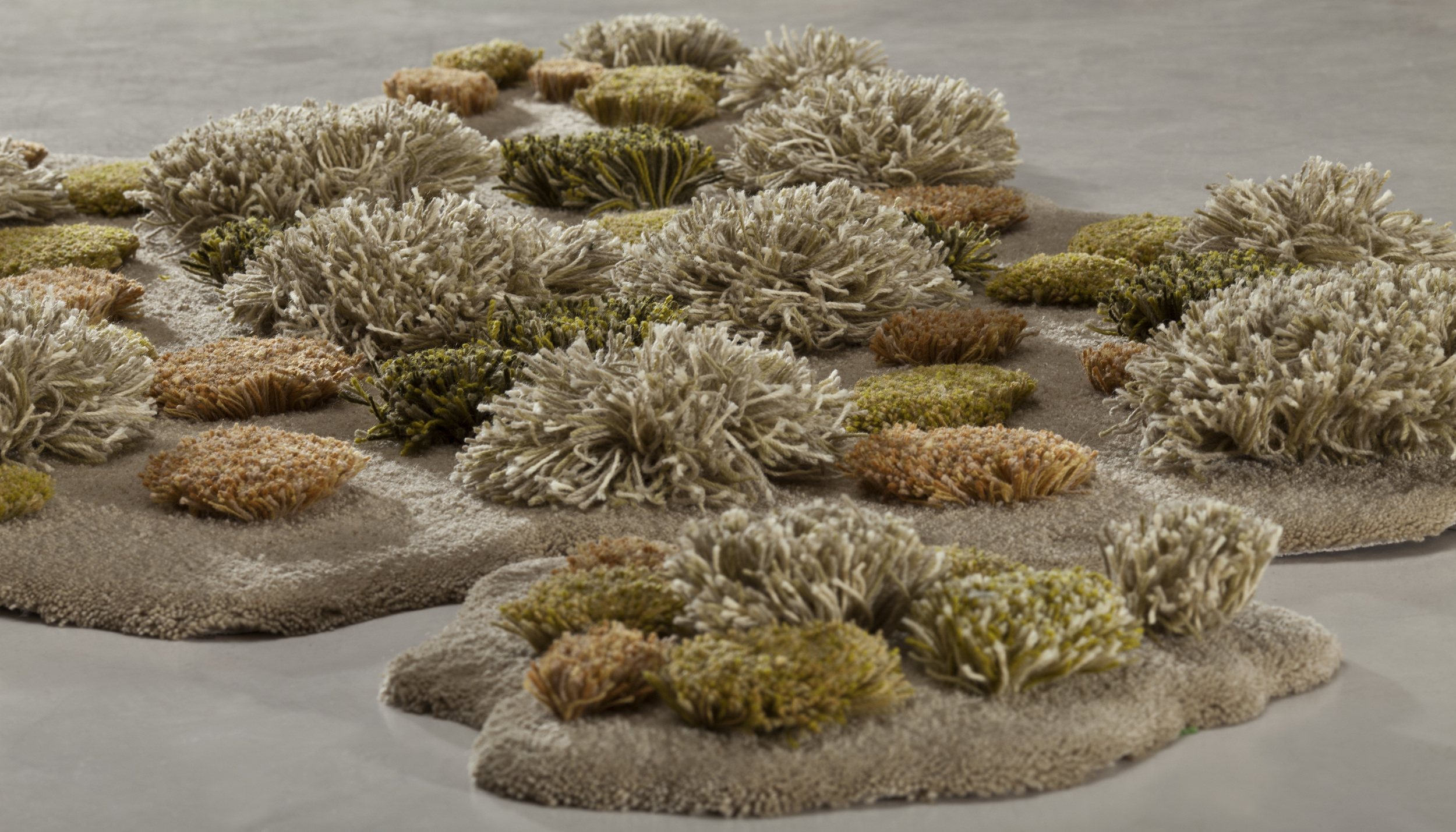
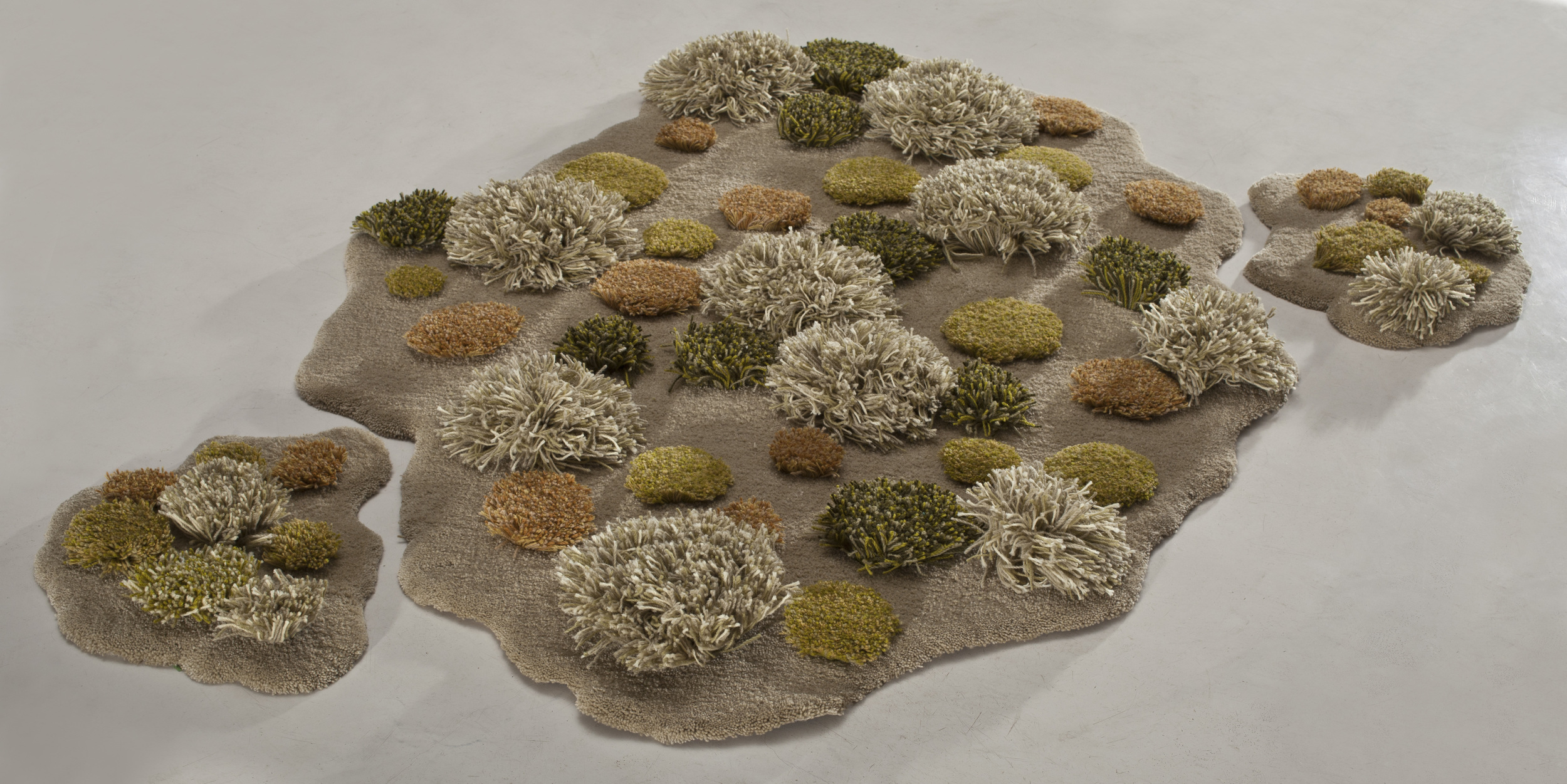
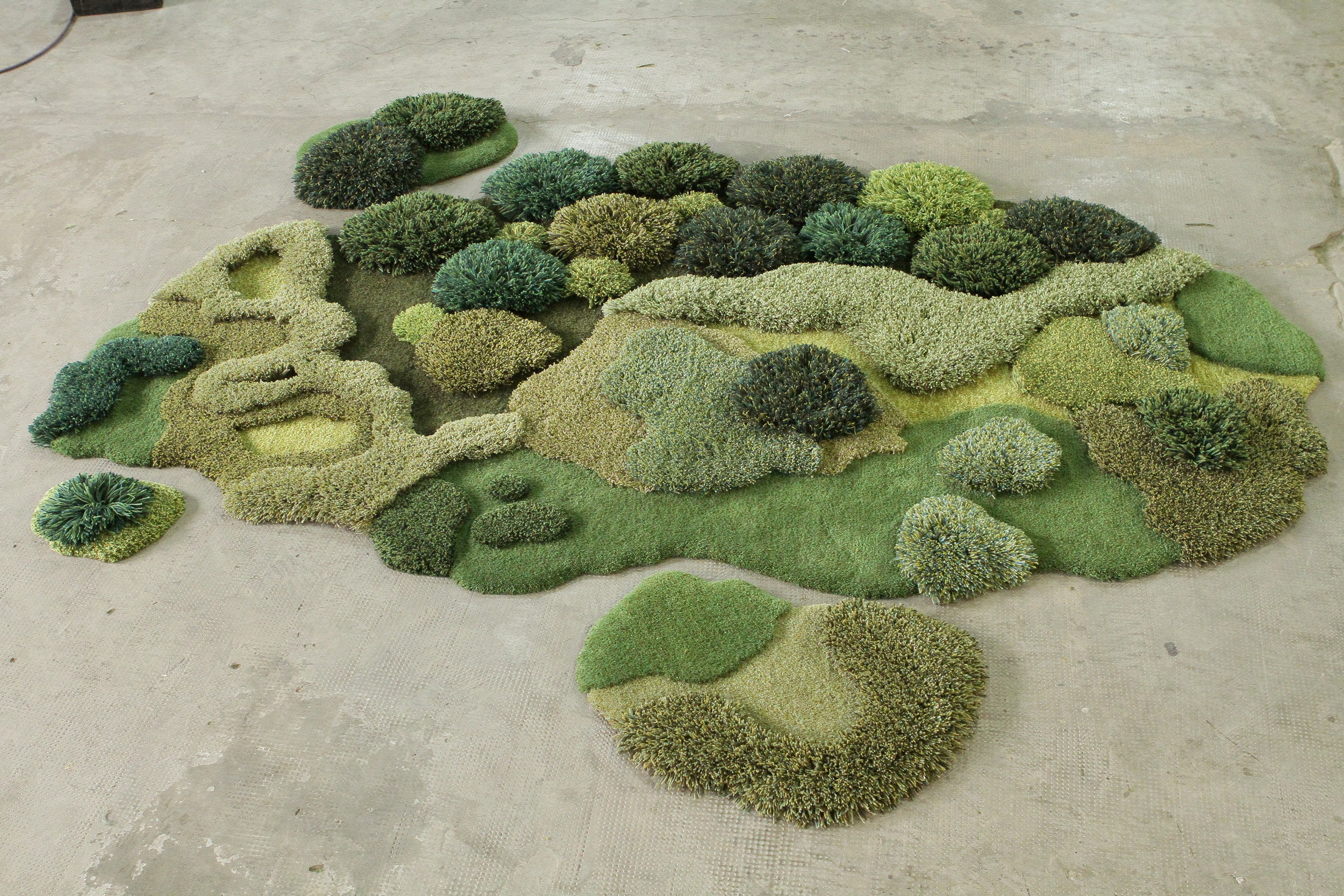

Alexandra Kehayoglou
How long does it take to create one masterpiece rug? What's the most complex project you have undertaken and completed?
Depending on the complexity of the piece, the production time can take from one to several months. I pay a lot of attention to details and I am extremely tedious with each and every stitch. The most complex project I worked on was a custom-made carpet designed by Olafur Eliasson and crafted by Alexandra Kehayoglou’s Studio. It consisted of a 3D carpet, which we had to adapt to a wooden topography to create a reading space in the Art Kunz Library of Berlin. This was truly challenging, because we had to develop a new method for the carpet installation. All in all, it was a great experience; we spent almost three weeks at the Studio. We worked a lot!
What makes a particular landscape inspiring enough for one of your rugs? What else inspires you throughout the process?
I guess the contemplation of the landscapes I love is the first step for the development of my work. Also, Argentinian geography has been very inspiring for me because, in a way, my personal history is tightly related to the history of that land. Walks through my parents garden with my son, road trips, sunsets, aerial views, the sea, the beach, my family, my grandmother, are part of this dialogue between nature, tradition and art.
You also have an inspiring Instagram account. In your view as an artist, is it important to promote yourself more as a 'brand' nowadays? Don't you feel that it has made your work more commercial?
I believe all art is very much about freedom. In a way, Instagram is a great tool for any visual artist, because it allows us to choose what we want to share about our daily work at the studio — it’s sort of a visual diary. During the last few years, artists have found new ways of creating the ‘buzz’ and circulation, it’s not merely about being a part of a gallery anymore. Even though my work is sometimes related to important brands, I really don’t find my work commercial at all. In fact, it is well known that there are new models of art business arising and concurrently with them, new ways of being an artist.

Alexandra Kehayoglou
Describe the relationship between fashion and your rugs. There was a runway setup project you've done for one of the major fashion brands. Are there any other fashion collaborations you’ve executed?
In 2014, Dries Van Noten contacted my studio through a fashion producer called Villa Eugénie, who had seen my work online. They asked for a rug of 50 meters based on the same nature concepts that I work on. The design of the carpet was a pastizal (grassland/pasture). We travelled to Paris for the installation of the piece. It was a great experience because, even though the process was very intense and it had to be developed in a very limited timeframe, a new way of thinking my work appeared [as a result].
How can we be more environmentally aware and shape people's mindsets through what we put out in the world?
I think we should start with small actions. Every day is a chance of making things better. If we finally understand that we are not the centre of the Earth, but just a tiny part of it, as well as the trees, the animals, the rivers and seas and the mountains, our decision-making and behaviour will lead us to living a more environmentally-conscious life.
What's your relationship with nature?
I was raised in a house with a big garden, so my approach to nature is quite sincere and spontaneous. As a child I used to explore the different colours, shadows, smell of the grass, the flowers and plants. Everything was special and new, my point of view was not contaminated by life experience. I remember making up stories for hours, nursing the birds, playing with mud. The feeling that time was frozen in a special moment is something I’ve been trying to transmit with my work as part of that first intuition.

The process of creating a masterpiece: Artist Alexandra Kehayoglou
In what ways has Argentina played a role in shaping you as an artist?
Argentina offers many kinds of climates, landscapes and cultures. I decided to embrace this diversity because it’s also a part of my own identity. The scenes I create are part of native territories that carry ancestral information and I think that my job as an artist is to transmit their message through the best language I know, art.